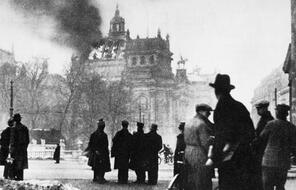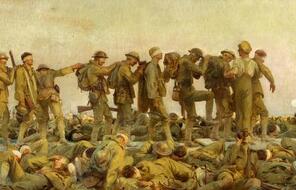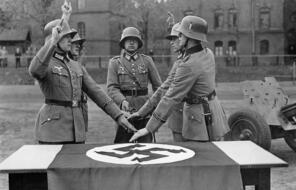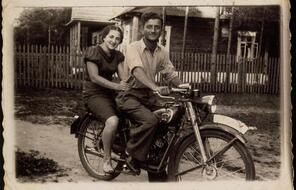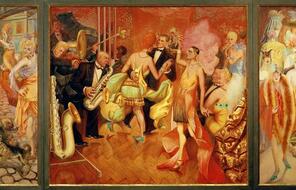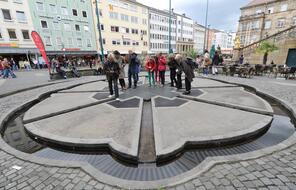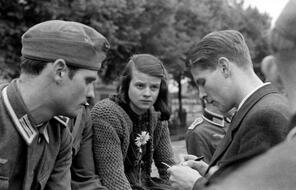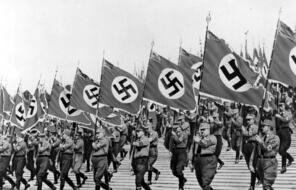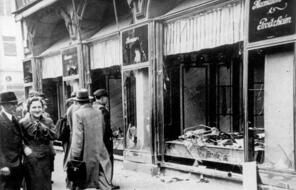A Commandant’s View
Dehumanizing the Enemy
In 1971, journalist Gitta Sereny interviewed Franz Stangl, who had been the commandant of the death camp at Sobibór and, later, the camp at Treblinka.
“Would it be true to say that you were used to the liquidations?”
He thought for a moment. “To tell the truth,” he then said, slowly and thoughtfully, “one did become used to it.”“In days? Weeks? Months?”
“Months. It was months before I could look one of them in the eye. I repressed it all by trying to create a special place: gardens, new barracks, new kitchens, new everything: barbers, tailors, shoemakers, carpenters. There were hundreds of ways to take one’s mind off it; I used them all.”“Even so, if you felt that strongly, there had to be times, perhaps at night, in the dark, when you couldn’t avoid thinking about it.”
“In the end, the only way to deal with it was to drink. I took a large glass of brandy to bed with me each night and I drank.”“I think you are evading my question.”
“No, I don’t mean to; of course, thoughts came. But I forced them away. I made myself concentrate on work, work, and again work.”“Would it be true to say that you finally felt they weren’t really human beings?”
“When I was on a trip once, years later in Brazil,” he said, his face deeply concentrated and obviously reliving the experience, “my train stopped next to a slaughterhouse. The cattle in the pens, hearing the noise of the train, trotted up to the fence and stared at the train. They were very close to my window, one crowding the other, looking at me through that fence. I thought then, ‘Look at this; this reminds me of Poland; that’s just how the people looked, trustingly, just before they went into the tins . . . ’”“You said tins,” I interrupted. “What do you mean?” But he went on without hearing, or answering me.
“ . . . I couldn’t eat tinned meat after that. Those big eyes . . . which looked at me . . . not knowing that in no time at all they’d all be dead.” He paused. His face was drawn. At this moment he looked old and worn and sad."So you didn’t feel they were human beings?"
“Cargo,” he said tonelessly. “They were cargo.” He raised and dropped his hand in a gesture of despair. Both our voices had dropped. It was one of the few times in those weeks of talks that he made no effort to cloak his despair, and his hopeless grief allowed a moment of sympathy.“When do you think you began to think of them as cargo? The way you spoke earlier, of the day when you first came to Treblinka, the horror you felt seeing the dead bodies everywhere—they weren’t ‘cargo’ to you then, were they?”
“I think it started the day I first saw the Totenlager [death camp] in Treblinka. I remember [Christian Wirth, the man who set up the death camps] standing there next to the pits full of blue-black corpses. It had nothing to do with humanity—it couldn’t have; it was a mass—a mass of rotting flesh. Wirth said, ‘What shall we do with this garbage?’ I think unconsciously that started me thinking of them as cargo.”“There were so many children; did they ever make you think of your children, of how you would feel in the position of those parents?”
“No,” he said slowly, “I can’t say I ever thought that way.” He paused. “You see,” he then continued, still speaking with this extreme seriousness and obviously intent on finding a new truth within himself, “I rarely saw them as individuals. It was always a huge mass. I sometimes stood on the wall and saw them in the tube. But—how can I explain it—they were naked, packed together, running, being driven with whips like . . . ” The sentence trailed off.. . . “Could you not have changed that?” I asked. “In your position, could you not have stopped the nakedness, the whips, the horror of the cattle pens?”
“No, no, no. This was the system. . . . It worked. And because it worked, it was irreversible.” 1
Click below to listen to an audio version of the reading
- 1Gitta Sereny, Into that Darkness: An Examination of Conscience (London: Pan Books, 1977), 200–02. Reproduced by permission of the Estate of Gitta Sereny and The Sayle Literary Agency.

Connection Questions
- What was Franz Stangl’s role in the death camps? What impact did his role have on him? Why does he say that “the only way to deal with it was to drink”?
- What words and phrases from Stangl’s interview describe how he saw his victims?
- After the war, Stangl escaped to Brazil. He was captured in 1970, tried in Germany, and convicted. He was interviewed by Sereny after his trial, while he waited in prison for the results of his appeal. How might the passage of time have influenced the way he answered her questions? Might he have answered those questions differently during the war, as the events he describes were taking place?
- What information does this reading add to help us understand how the Holocaust was possible?
- How do you respond to Stangl’s account? What other questions might you have asked him?
Get the Handout
How to Cite This Reading
Facing History & Ourselves, “A Commandant’s View”, last updated August 2, 2016.

